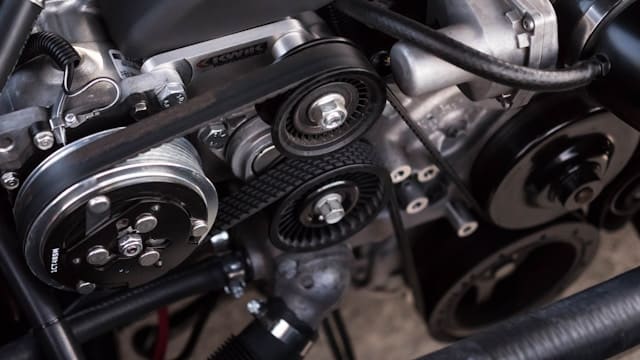The Importance of Regularly Checking Your Car’s Belts and Hoses
 Belts and hoses play a pivotal role in the smooth operation of your vehicle, driving essential components and ensuring fluids flow correctly. Despite their importance, these components are often overlooked during routine car maintenance. Neglecting belts and hoses can lead to unexpected breakdowns and costly repairs. This article emphasizes the importance of regularly checking your car’s belts and hoses to maintain optimal performance and extend the life of your vehicle.
Belts and hoses play a pivotal role in the smooth operation of your vehicle, driving essential components and ensuring fluids flow correctly. Despite their importance, these components are often overlooked during routine car maintenance. Neglecting belts and hoses can lead to unexpected breakdowns and costly repairs. This article emphasizes the importance of regularly checking your car’s belts and hoses to maintain optimal performance and extend the life of your vehicle.
Critical Roles of Belts and Hoses
Driving Vital Components
Belts, such as the serpentine belt, drive crucial components like the alternator, water pump, and power steering pump. A failure in one of these belts can lead to loss of power, overheating, and even complete engine shutdown.
Ensuring Fluid Flow
Hoses transport vital fluids throughout your vehicle, including coolant, brake fluid, and fuel. These hoses are subject to the harsh environment of the engine compartment, making them susceptible to wear and tear. A leak or burst in a hose can lead to fluid loss, overheating, and potential engine damage.
Signs of Wear and Tear
Visual Inspection
Regular visual inspections can help identify signs of wear, such as cracks, fraying, or bulges in belts and hoses. These signs indicate that a belt or hose may be nearing the end of its service life and requires replacement.
Unusual Noises
A squealing noise from the engine compartment often signals a loose or worn belt. This noise should not be ignored, as it can indicate that a belt is not properly driving its components, leading to reduced performance or failure.
Leaks and Drips
Puddles or drips under your vehicle can indicate a leaking hose. Identifying the source of the leak early can prevent more severe issues, such as overheating or loss of brake fluid.
Preventive Maintenance
Regular Checks
Incorporating belt and hose inspections into your regular maintenance routine can prevent unexpected failures. Most manufacturers recommend checking these components at specific intervals, usually during oil changes or other servicing.
Replacement Intervals
Belts and hoses have recommended replacement intervals, typically based on mileage. Adhering to these recommendations can prevent failures, as wear may not always be visually apparent.
Professional Inspection
While some wear signs can be identified through visual inspection, a professional mechanic can conduct a more thorough examination. They can detect early signs of wear and recommend replacements before a failure occurs.
Benefits of Regular Maintenance
Avoiding Breakdowns
Regularly checking and maintaining belts and hoses can significantly reduce the risk of roadside breakdowns and emergency repairs, ensuring your vehicle remains reliable.
Extending Vehicle Life
By preventing overheating and ensuring that all components are properly powered, you can extend the life of your vehicle and avoid premature engine wear.
Cost Savings
Preventive maintenance, including regular checks of belts and hoses, can lead to substantial cost savings over time by avoiding the more significant expense of emergency repairs and tow services.
Conclusion
Regularly checking your car’s belts and hoses is a crucial aspect of vehicle maintenance that should not be overlooked. By recognizing the signs of wear and adhering to recommended replacement intervals, you can ensure the reliability and longevity of your vehicle. Incorporating these checks into your maintenance routine can save you time, money, and the inconvenience of unexpected repairs, keeping your car running smoothly for years to come.
